Shipping containers, once primarily the domain of transportation and storage, have taken on a new lease of life in the realm of architecture and design.
Due to their inherent strength, flexibility, and availability, these steel containers are frequently repurposed by architects seeking a modular and cost-effective building solution.
Firmly standardized by the International Organization for Standardization, these containers ensure consistency in size and quality, making them an ideal building block for construction projects around the globe.
As a result, shipping container architecture has emerged as a viable and increasingly popular way to construct residential, commercial, and even public buildings.
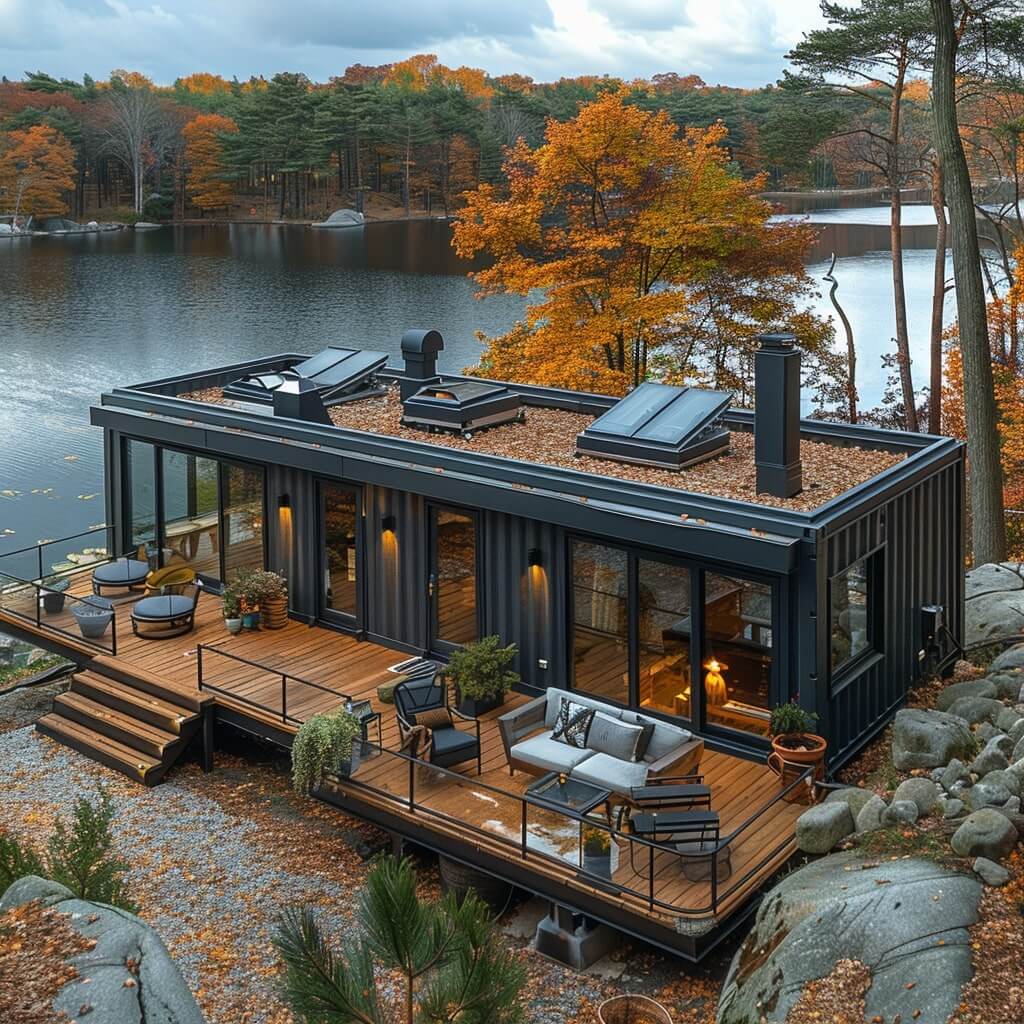
The framework of a shipping container comprises corrosion-resistant Corten steel, designed to withstand harsh conditions and heavy loads. This makes them durable and suitable for affixing to one another, creating a broader modular design, scalable both horizontally and vertically.
The adaptability of these modules affords architects the creative freedom to piece them together like building blocks, tailoring structures that can range from simple single-unit homes to complex multi-level edifices.
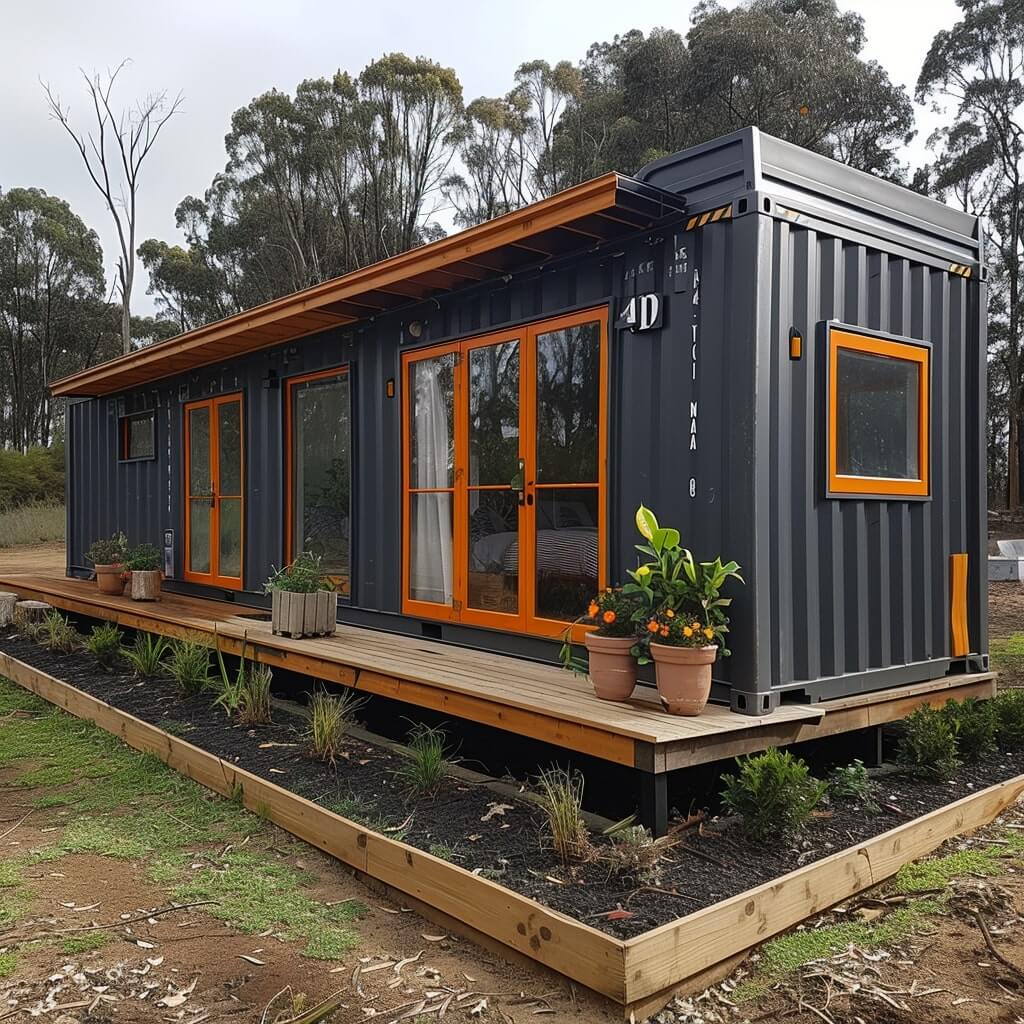
Design and Architecture
Delving into the realm of shipping container structure reveals a meticulous interplay between form and function. The following subsections shed light on the critical aspects of design and architecture, detailing the unique constituents ranging from materials to modular adaptations.
Materials and Durability
Conex containers and intermodal containers are crafted primarily from Corten steel sheets. This particular type of steel, also known as weathering steel, is favored for its high strength and durability, providing enhanced resistance to rusting and corrosion.
The inherent durability of this material lends itself well to architectural applications. The standard plywood floor often found in containers is typically treated to withstand the rigors of transport, enhancing the overall durability of the construction.
Structural Components
At a structural level, shipping containers consist of key elements such as floor, roof, and side walls, supported by robust cross members that bear the weight of stacked units.
Reinforced corner posts work in tandem with corner fittings – quintessential for the modular construction and container choice in stackable designs – while durable door handles ensure ease of access.
Architectural Innovations
Architectural forays like Kengo Kuma’s inventive designs and the Container City project showcase the creative potential within shipping container design.
These modified shipping containers can be transformed into dynamic spaces, with some architects utilizing the corrugated profile of the container walls as an aesthetic statement in their designs.
Engineering and Safety Standards
Architects and structural engineers must adhere to stringent regulations, including building permits and the Container Safety Convention (CSC).
The CSC’s standards are reflected on the CSC plate, an essential marker of compliance. Additionally, guidelines such as the Approval of Continuous Examination Program (ACEP) certify safe containers fit for their novel purposes.
Aesthetics and Modular Adaptations
The aesthetics of shipping container structures flexibly adapt to modular construction approaches.
This means that selections relevant to container choice – largely influenced by projected architectural requirements – can range from bare utilitarian to avant-garde and bespoke compositions.
Their innate stackable features not only serve functional stacking in freight operations but also inspire vertical designs in modern architecture.
Practical Applications
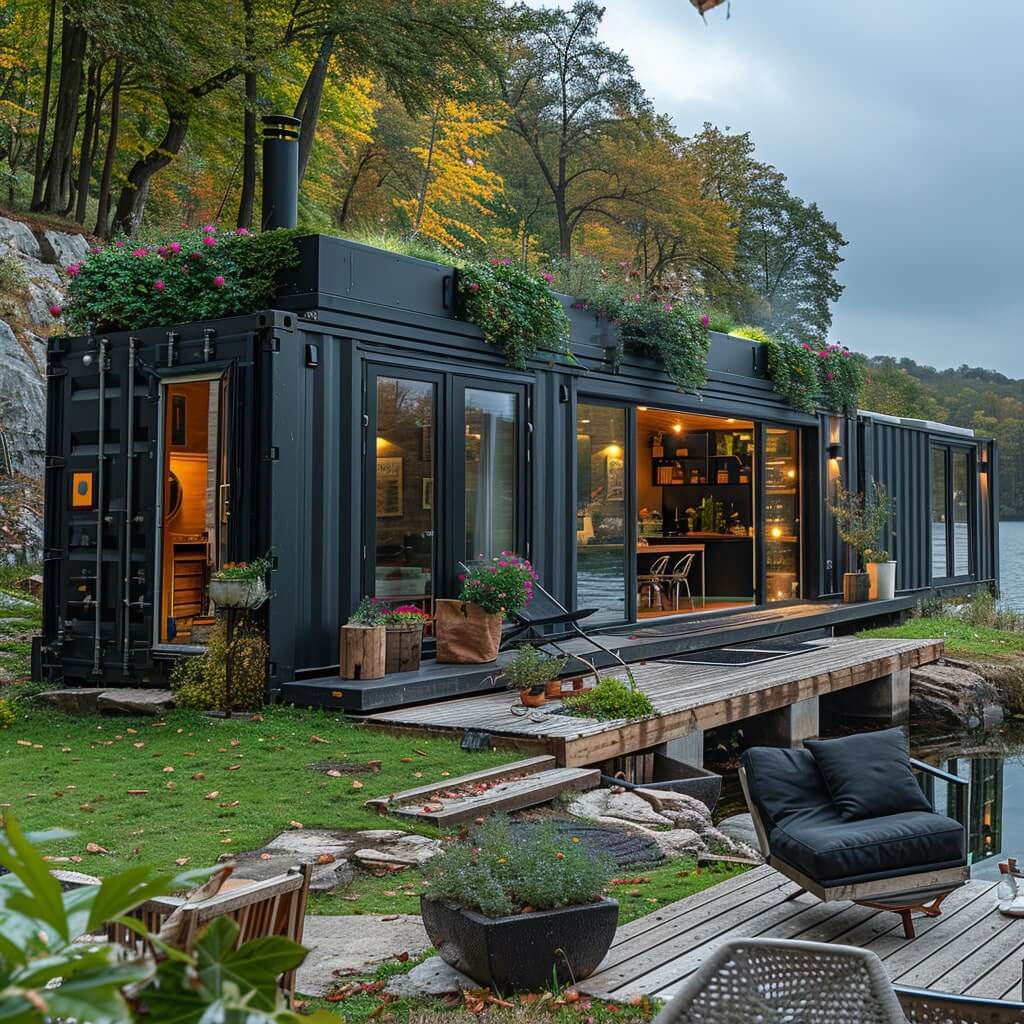
Shipping container structures have proven to be a versatile solution in architecture, offering substantial benefits in construction efficiency, cost-effectiveness, and sustainability.
They are commonly used not only for storage but also for creating habitable spaces due to their durability and modularity.
Residential and Commercial Structures
Shipping containers have been ingeniously repurposed for residential use, ranging from simple homes to complex, multi-unit buildings.
The sidewalls and roof panels of containers are often retained to showcase the industrial aesthetic, while wood structures are integrated for additional support and insulation.
Commercial structures such as hotels and office buildings also leverage the stackable nature of containers, creating innovative designs that are both functional and visually appealing.
For MEP (mechanical, electrical, and plumbing) systems, containers offer a simplified approach to installation.
Since they are essentially prefabricated blocks, MEP systems can be designed and fitted in a controlled environment before being transported to the construction site, reducing on-site labor and time.
Innovative Global Examples
Around the globe, shipping container architecture has given rise to creative and impactful structures.
In Copenhagen, the Urban Rigger project offers floating student housing, ingeniously designed using shipping containers to utilize waterways and address urban housing shortages.
Meanwhile, in London, containers have been transformed into pop-up shops and cafs, fostering urban renewal and community spaces.
Moreover, stadium-974 in Qatar is a testament to the transformative potential of container architecture in large-scale projects.
Constructed using shipping containers, it features a temporary design that can be disassembled or repurposed post-events.
Even global brands like Starbucks have embraced container-based construction, opening drive-thru cafes in containers, emphasizing sustainability and mobility.
Each of these examples showcases the firm’s confidence in containers as a legitimate and often superior choice for both temporary and permanent structures.
Technical Aspects and Challenges
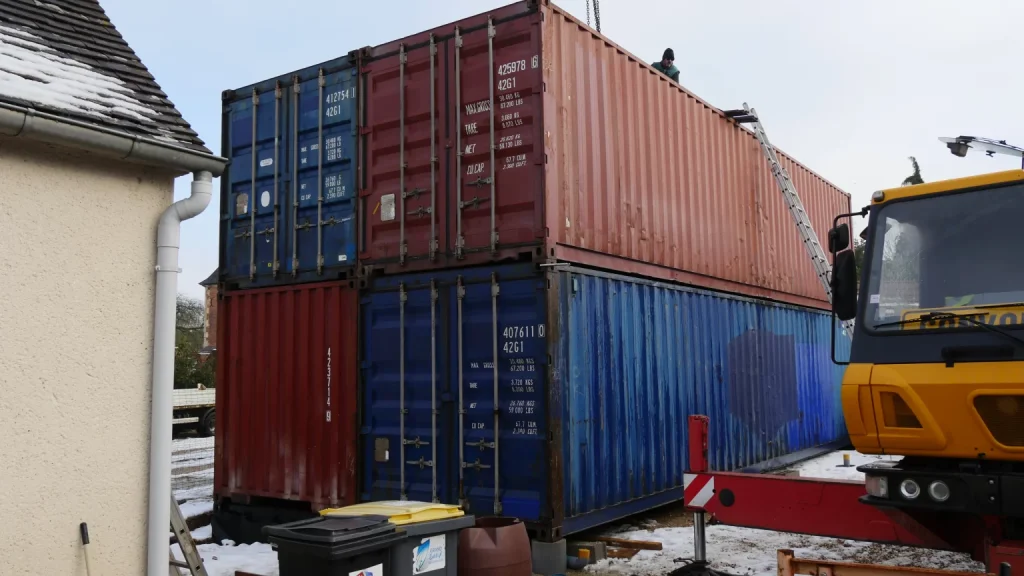
In designing and constructing with shipping containers, professionals encounter various technical aspects and challenges to ensure structural integrity, safety, and functionality.
Handling and Transportation
When transporting shipping containers, the presence of forklift pockets and rails is integral for the safe and efficient movement of these heavy loads.
Due to the big and durable nature of cargo containers, specialized equipment like cranes and forklifts is required. Care must be taken to prevent the containers from becoming bowed or misshapen during transport, which could compromise structural integrity.
Weatherproofing and Insulation
To make a shipping container habitable, proper weatherproofing and insulation are crucial.
Containers face challenges like humidity and water penetration if gaskets and rubber seals on doors and windows are not intact.
Proper ventilation systems must be incorporated to manage condensation, and materials like plywood lining the container floor add a layer of thermal protection.
Modifications and Customization
Customization of containers may include adding doors, windows, and interior walls.
The strength of corten steel allows for significant modifications, yet the integrity of the conex container’s structure has to be maintained.
Careful consideration must be given to the placement of cuts in the container to avoid reducing its rigidity. Each alteration requires reinforcement with additional framing or welding to maintain structural soundness.
Regulatory and Logistics Considerations
Adherence to international organization for standardization (ISO) regulations is required for the transportation of freight containers.
Additionally, local building codes govern the use of intermodal containers as structures.
These regulatory and logistics considerations inform the design and usage of shipping containers, impacting decisions regarding modifications, site preparation, and overall project feasibility.
Longevity and Maintenance
Maintenance of a shipping container structure is paramount for ensuring its longevity.
The durable nature of corten steel helps in resisting corrosion, but regular inspection of cam keepers, locking mechanisms, and lock rods is necessary to ensure their functionality.
Routine checks for any signs of rust or damage, and timely repairs, can greatly extend the service life of a container structure.
Global Impact and Sustainability
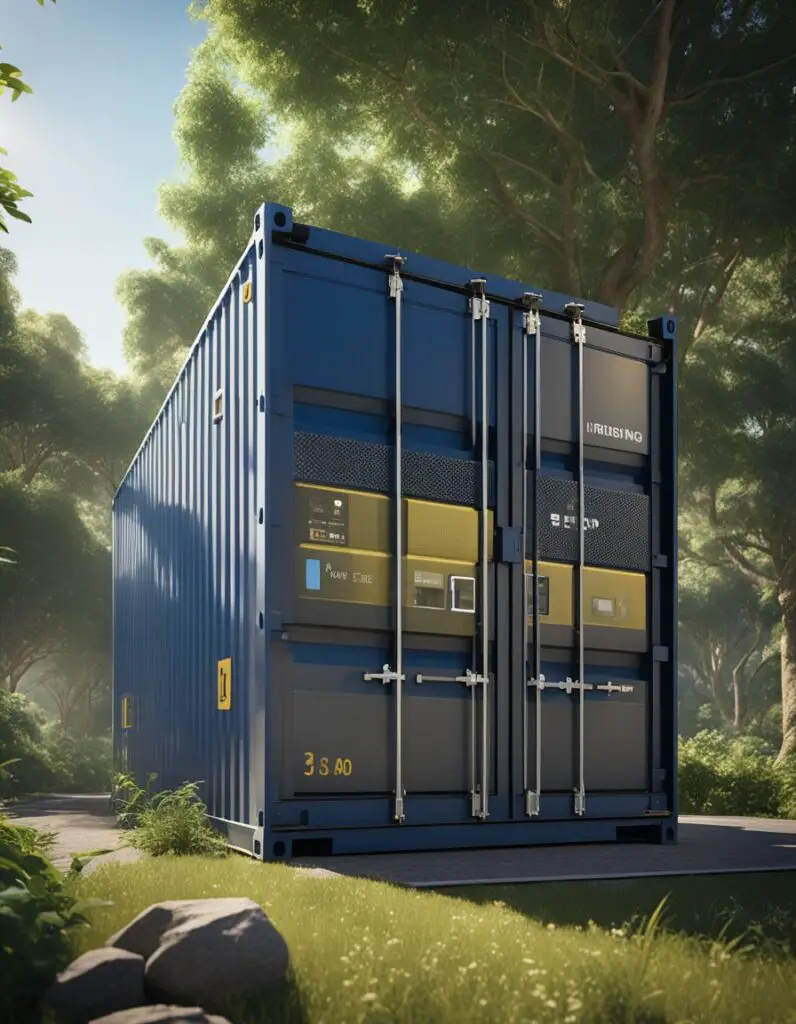
The use of shipping containers in construction shows significant global impact. It factors in environmental sustainability, contribution to social and urban development, and influence on economic and market trends. As the lifespan of these structures can span decades, their deployment calls for a closer look at these aspects.
Environmental Considerations
Shipping containers are predominantly made of Corten steel, known for its strength and durability. This material endures the elements well, which contributes to the reduced need for replacement. This lowers the carbon footprint associated with construction.
Green building initiatives often include the use of shipping containers due to their inherent recycling potential. Cities like Amsterdam and Taiwan have integrated container structures into their urban fabric, reflecting sustainability and innovation in design.
Moreover, containers can incorporate renewable materials for insulation and finishings. This pushes the envelope for eco-friendly construction methods.
Social and Urban Development
The modular design of shipping containers allows for their use in projects such as Container City in London, UK. This offers not just storage but also living and working spaces.
In Australia, containers have been repurposed for emergency housing, responding to social needs with rapid deployment capabilities. Their flexibility promotes social sustainability by providing adaptable spaces for communities.
In dense urban areas like Los Angeles, container structures provide creative solutions to space constraints. They often emerge in the form of affordable housing and pop-up businesses.
Economic and Market Trends
From a financial perspective, container use in construction is often marked by cost-effectiveness due to the reduced material and labor costs.
The shipping container market has seen growth in regions such as Denmark and Qatar, spurred by the economic benefits of converting these steel boxes into habitable spaces.
The trend towards urban renewables and smart cities has heightened the economic impact. This makes the choice of shipping containers both a statement and a strategic investment.
The popularity of this approach continues to rise globally. Entrepreneurs and developers in the UK and beyond recognize the blend of economic savvy with environmental responsibility.
